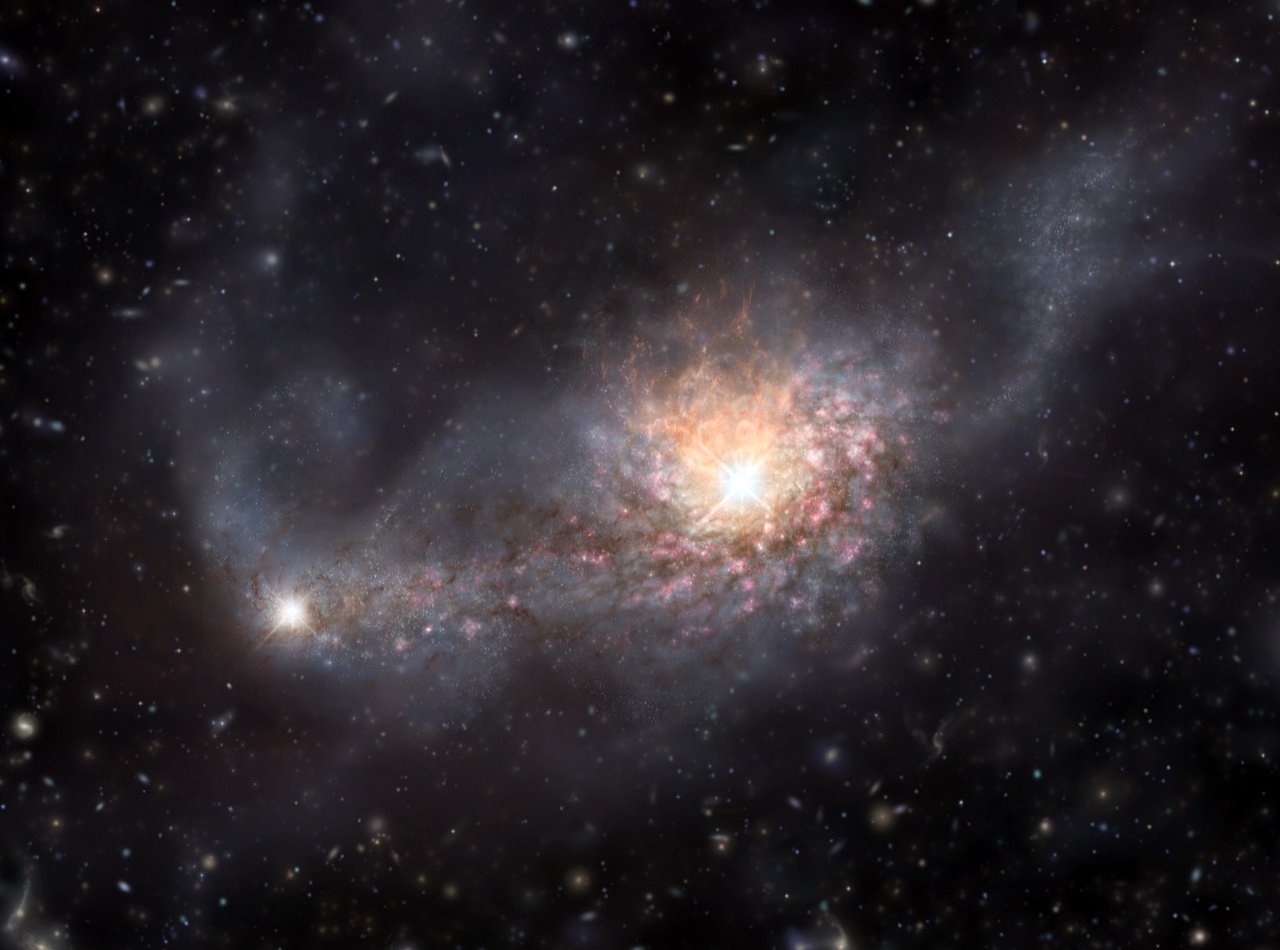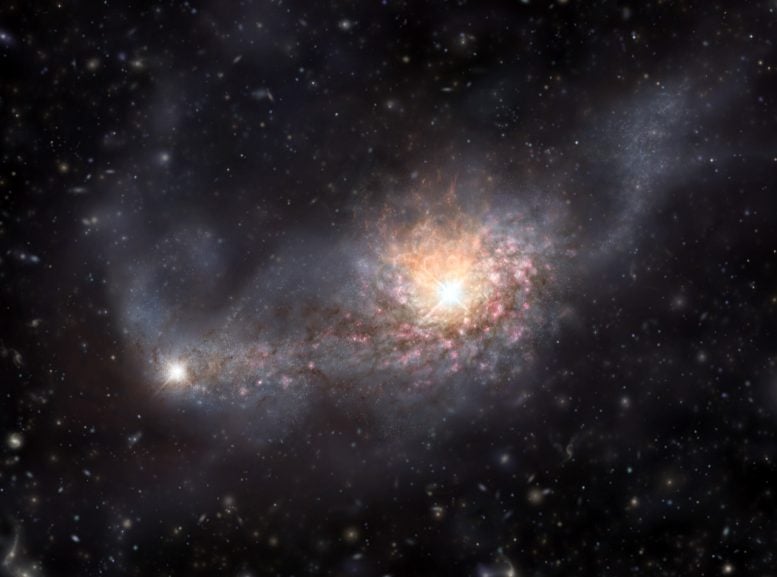

Astronomers have observed a rare galaxy merger from 12.8 billion years ago, using the ALMA radio telescope.
This early cosmic event involves a pair of galaxies whose interaction is expected to create a monster galaxy, marked by intense quasar activity and a burst of star formation. Such discoveries are crucial for understanding the formative stages of galaxies and black holes in the Universe.
Discovery of Ancient Galaxy Merger
Astronomers have spotted a pair of galaxies in the act of merging 12.8 billion years ago. The characteristics of these galaxies indicate that the merger will form a monster galaxy, one of the brightest types of objects in the Universe. These results are important for understanding the early evolution of galaxies and black holes in the early Universe.
Quasar Activity in Early Galaxies
Quasars are bright objects powered by matter falling into a supermassive black hole at the center of a galaxy in the early Universe. The most accepted theory is that when two gas-rich galaxies merge to form a single larger galaxy, the gravitational interaction of the two galaxies causes gas to fall towards the supermassive black hole in one or both of the galaxies, causing quasar activity.
Observations with ALMA Reveal Merging Galaxies
To test this theory, an international team of researchers led by Takuma Izumi used the ALMA (Atacama Large Millimeter/submillimeter Array) radio telescope to study the earliest known pair of close quasars. This pair was discovered by Yoshiki Matsuoka, at Ehime University in Japan, in images taken by the Subaru Telescope.
Located in the direction of the constellation Virgo, this pair of quasars existed during the first 900 million years of the Universe. The pair is dim, indicating that the quasars are still in the early stages of their evolution. The ALMA observations mapped the host galaxies of the quasars and showed that the galaxies are linked by a “bridge” of gas and dust. This indicates that the two galaxies are in fact merging.
Implications of the Galactic Merger
The ALMA observations also allowed the team to measure the amount of gas, the material for new star formation. The team found that the two galaxies are very rich in gas, suggesting that in addition to more vigorous quasar activity in the future, the merger will also trigger a rapid increase in star formation, known as a “starburst.” The combination of starburst activity and vigorous quasar activity is expected to create a super-bright object in the early Universe known as a monster galaxy.
Reference: “Merging Gas-rich Galaxies That Harbor Low-luminosity Twin Quasars at z = 6.05: A Promising Progenitor of the Most Luminous Quasars” by Takuma Izumi, Yoshiki Matsuoka, Masafusa Onoue, Michael A. Strauss, Hideki Umehata, John D. Silverman, Tohru Nagao, Masatoshi Imanishi, Kotaro Kohno, Yoshiki Toba, Kazushi Iwasawa, Kouichiro Nakanishi, Mahoshi Sawamura, Seiji Fujimoto, Satoshi Kikuta, Toshihiro Kawaguchi, Kentaro Aoki and Tomotsugu Goto, 29 August 2024, The Astrophysical Journal.
DOI: 10.3847/1538-4357/ad57c6